Related Research Articles
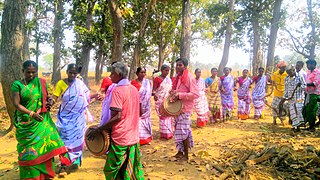
The Santal people are an Austroasiatic-speaking Munda ethnic group of the Indian subcontinent. Santals are the largest tribe in the Jharkhand and West Bengal in terms of population and are also found in the states of Odisha, Bihar and Assam. They are the largest ethnic minority in northern Bangladesh's Rajshahi Division and Rangpur Division. They have a sizeable population in Nepal. The Santals speak Santali, the most widely spoken Munda languages of Austro-asiatic language family.

Mahasweta Devi was an Indian writer in Bengali and an activist. Her notable literary works include Hajar Churashir Maa, Rudali, and Aranyer Adhikar. She was a leftist who worked for the rights and empowerment of the tribal people of West Bengal, Bihar, Madhya Pradesh and Chhattisgarh states of India. She was honoured with various literary awards such as the Sahitya Akademi Award, Jnanpith Award and Ramon Magsaysay Award along with India's civilian awards Padma Shri and Padma Vibhushan.

Syed Mir Nisar Ali, better known as Titumir, was a Bengali revolutionary, who developed a strand of Muslim nationalism coupled with agrarian and political consciousness. He is famed for having built a large bamboo fort to resist the British, which passed onto Bengali folk legend.
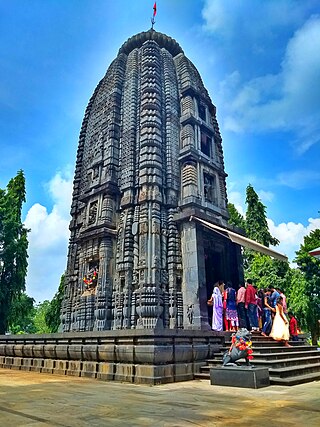
Mayurbhanj district is one of the 30 districts in the Odisha state of eastern India. It holds the distinction of being the largest district in Odisha by area. The district's headquarters is located in Baripada, with other major towns including Rairangpur, Karanjia, and Bahalda. As of 2011, Mayurbhanj ranks as the third-most populous district in Odisha, following Ganjam and Cuttack.

The Kurukh or Oraon, also spelt Uraon or Dhangad, are a Dravidian speaking ethnolinguistic group inhabiting Chhotanagpur Plateau and adjoining areas - mainly the Indian states of Jharkhand, Odisha, Chhattisgarh, and West Bengal. They predominantly speak Kurukh as their native language, which belongs to the Dravidian language family. In Maharashtra, Oraon people are also known as Dhangad.

The Kharia are an Austroasiatic tribal ethnic group from east-central India. They originally speak the Kharia language, which belong to Austroasiatic languages. They are sub-divided into three groups known as the Hill Kharia, Delki Kharia and the Dudh Kharia. Amongst them, the Dudh Kharia is the most educated community.
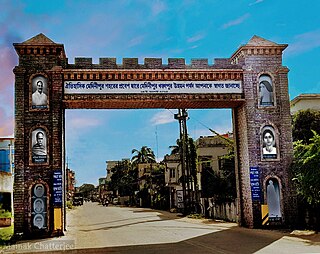
Medinipur or Midnapore is a city known for its history in the Indian state of West Bengal. It is the headquarters of the West Medinipur district. It is situated on the banks of the Kangsabati River. The Urban Agglomeration of Midnapore consists of the city proper, Mohanpur, Keranichati and Khayerullachak. Midnapore and its neighbouring city of Kharagpur constitute the central core of the Midnapore Kharagpur Development Authority metro area, spread across 576 square kilometres.
Chuni Kotal was a Dalit Adivasi of Lodha Shabar tribe, a Scheduled Tribes of India, who in 1985 became the first woman graduate among the Lodha Shabars.
PARDHI is a Hindu tribe in India. The tribe is found mostly in Maharashtra and parts of Madhya Pradesh however small numbers can be found in Gujarat and Andhra Pradesh. The word Pardhi is derived from the Marathi word ‘Paradh’ which means hunting and Sanskrit word ‘papardhi’ which means hunting or the game to be hunted. In some parts of India Pardhis are known as Meywarees. They also have various other names like Advichincher, Phans Pardhi, Phanse Pardhi, Langoli Pardhi, Bahelia, Bahellia, Chita Pardhi, Shikari, Takankar, Takia Pardhi. Pardhi tribe is divided in groups like Vaghri Pardhi and Phase Pardhi. These are further divided into subgroups like Pal Pardhi, Gav Pardhi, Takankar, Takari. Widely found surnames among them include Chauhan (Chavan), Rathod and Solanki.

The Partition of Bengal in 1947, part of the Partition of India, divided the British Indian Bengal Province along the Radcliffe Line between the Dominion of India and the Dominion of Pakistan. The Bengali Hindu-majority West Bengal became a state of India, and the Bengali Muslim-majority East Bengal became a province of Pakistan.

Paschim Medinipur district is one of the districts of the state of West Bengal, India. It was formed on 1 January 2002 after the Partition of Midnapore into Paschim Medinipur and Purba Medinipur. On 4 April 2017, the Jhargram subdivision was converted into a district. GDP of West Midnapore district is 12 billion USD.

The Sora are a Munda ethnic group from eastern India. They live in southern Odisha and north coastal Andhra Pradesh.
East Bengali Refugees are people who left East Bengal following the Partition of Bengal, which was part of the Independence of India and Pakistan in 1947. An overwhelming majority of these refugees and immigrants were Bengali Hindus. During the Bangladesh liberation war with West Pakistan, an estimated ten million people of East Pakistan fled the country and took refuge in India particularly in the Indian states of West Bengal and Indian North East region, especially Tripura and Assam.
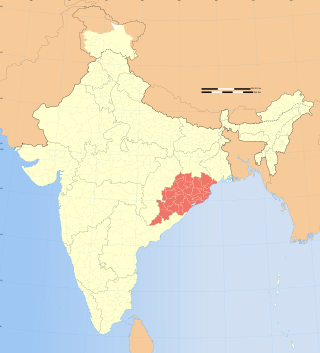
Religious violence in Odisha consists of civil unrest and riots in the remote forest region surrounding the Kandhamal district in the western parts of the Indian state of Odisha.

Bhumij is a Munda ethnic group of India. They primarily live in the Indian states of West Bengal, Odisha, Assam and Jharkhand, mostly in the old Singhbhum district. Also in states like Bihar and Assam. There is also a sizeable population found in Bangladesh. Bhumijas speak the Bhumij language, an Austroasiatic language, and use Ol Onal script for writing.
Lodha people are one of Schedule Tribes and PVTGs of India, primarily living in West Bengal and Odisha. Lodhas of West Bengal mostly live the Paschim Medinipur and Jhargham districts. A section of the Lodha has converted to Islam, and formed a distinct community called the Lodha Muslims.
Founded in 1998, Budhan Theatre is an Indian theatre group composed of members of the Chhara tribe, one of India's groups of denotified or "criminal" tribal people in Ahmedabad, Gujarat. The Budhan Theatre was founded by Prof. Ganesh Devy G. N. Devy, a renowned linguist and professor of English Literature and Smt. Mahasweta Devi Mahasweta Devi a noted Bangla writer and Magsaysay awardee.
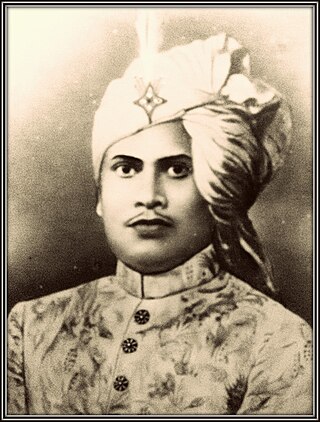
Narasingha Malla Deb, O.B.E. was a member of the Parliament of India and the 18th Raja of Jhargram, which he led from 1916 until the abolition of zamindaris by the West Bengal State Acquisition and Tenancy Act of 1950.
Ullas is a Bengali social drama film directed by Ishwar Chakraborty and produced by Sankar Sarkar. This film was based on three short stories of Mahasweta Devi namely Daur, Mahadu Ekti Rupkatha and Anno Aranya. This movie was released on 29 June 2012 in the banner of R.N.R. Enterprise. Writer Mahasweta Devi acted herself in the film in the role of Basuli goddess.
References
- ↑ "Sabar in India". Joshua Project .
- ↑ Dilip D'Souza on the Sabar tribe Rediff.com , 16 October 1999.
- ↑ Accused Of Being Accursed by Dilip D'Souza, Rediff.com , 10 June 1999.
- ↑ Orissa Tribes bharatonline.com'.
- ↑ Sabar Tribe india9.com.
- ↑ Hazaar Chaurasi Ki Ma - Mahashweta Devi Tehelka, 11 September 2004.
- ↑ Sabar tribals go on ‘Bharat Darshan’ The Hindu , 27 February 2008.
- ↑ "Red Faced". indiatoday.com. India Today. 28 June 2004. Retrieved 17 October 2015.
Budhu Sabar, who lost his father Samay and sister Mongli earlier this year, has no doubt they starved to death. "My father had nothing but water for almost a fortnight before his death," says Budhu. "In the end he got fever and I watched him die without food."
- ↑ Murty, B Vijay (20 March 2009). "Missing mantris: Sex workers step in". Hindustan Times. Archived from the original on 17 October 2012. Retrieved 8 November 2018.
- ↑ Jengcham, Subhash (2012). "Shabar". In Sirajul Islam; Miah, Sajahan; Khanam, Mahfuza; Ahmed, Sabbir (eds.). Banglapedia: the National Encyclopedia of Bangladesh (Online ed.). Dhaka, Bangladesh: Banglapedia Trust, Asiatic Society of Bangladesh. ISBN 984-32-0576-6. OCLC 52727562. OL 30677644M . Retrieved 24 March 2024.
Sources
- Roy, H.M. (1986). Savara, The snake charmer. Calcutta: Institute of social research and applied anthropology.
- Roy, B.K. (1970). The Savar a Scheduled Tribe in West Bengal (PDF). Monograph Series, Part V-B (iv), Vol-I, West Bengal - Census 1961. Office of the Registrar General, India.
